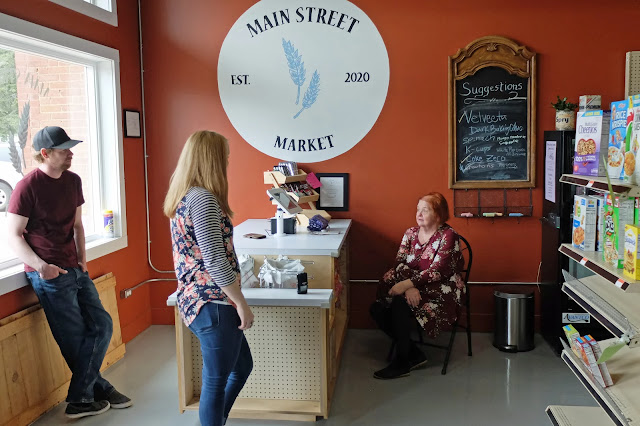 |
| Top of the newspaper's special section |
The Elberton Star "published a story with the actual facts," and Editor Rose Scoggins "didn't stop there," a sister paper, The Northeast Georgian, said in an opinion piece by Matt Aiken and Matthew Osborne. She "turned out an eight-page special section documenting the history of the Guidestones the day following their destruction. It’s filled with photos, and facts and letters from locals lamenting the loss of the stones. . . . It’s a perfect example of why old school journalism is so vital to a community. Every town, no matter how big or how small, benefits from a real local news source that specializes in asking questions and checking facts."
The story and the section were local antidotes to false stories about a reported plan by a pharmaceutical executive to rebuild the structure, and a supposed time capsule beneath it. The Star reported that a marker at the site "described a time capsule being buried six feet below," but "Elberton Granite Association Executive Vice President Chris Kubas said Friday morning that the granite marker was not placed at the site at the same time the Guidestones were unveiled in 1980. The marker included directions to the granite museum, which Kubas said did not exist until 1982."
Falsehoods may have been fed by mystery. The section recounts in detail the history of the monument, funded by a man who identified himself only as Robert C. Christian and bought "a monument that would be dedicated to conservation and would leave behind a message for those at the time and for years to come," in eight languages. In 1981, the Atlanta Journal-Constitution quoted a local banker as saying that "Christian," whose real name was known only to the banker, that he "represented a group of individuals who anticipate a future nuclear, economic or social holocaust and wanted to leave 'guides' for preserving humanity."
















